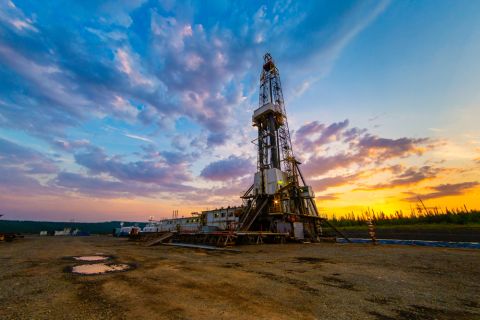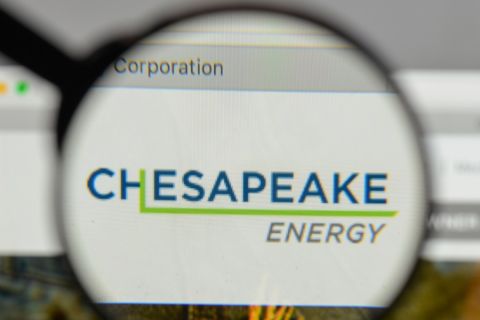One of the freshest faces among public small-cap E&P companies is Denver independent Westport Resources Corp. Westport is hardly the new kid on the block, however. Since its inception in 1991, the company has spent a decade growing steadily through acquisitions and subsequent drilling on those acquired assets. Its first big buy was the 1995 purchase of Conoco Inc. 's Rocky Mountain properties, mainly North Dakota and Wyoming assets that carried reserves of 55 billion cubic feet of gas equivalent (Bcfe). In early 1997, Westport acquired the Axem companies, adding 82 Bcfe of reserves in the Rockies, West Texas and Midcontinent regions. It followed that deal by acquiring, with partner Energen Resources Corp. , Total Minatome Corp. in 1998, adding 64 Bcfe of reserves in the Rockies, Gulf Coast and the Gulf of Mexico. Westport is a house built on acquisitions, and the test of the worth of an acquisition is what a company does with it after purchase. In Westport's case, judicious management and a keen eye toward aggressive exploitation enabled it to add reserves at the same time it was ramping up production from the acquired properties. It has consistently improved on its purchases. Spring 2000 saw its choicest transaction, when it combined the assets of Westport Oil & Gas with those of Equitable Production (Gulf) Co. The merger added 134 Bcfe of proved and 106 Bcfe of unrisked probable and possible reserves to Westport's books and doubled its exploitation inventory in the Gulf of Mexico. The deal balanced Westport's reserve mix by adding natural gas and high-impact projects to a portfolio that formerly was heavily weighted toward oil. The Equitable merger was a high point of Westport's acquisition plan and the final springboard it needed before jumping into the public market. During its IPO this past fall, Westport sold 10.2 million shares of common stock at $15 per share, successfully expanding its ownership base, adding liquidity, and improving its ability to grow. At press time, the stock was trading just under $21 per share. Today, Westport boasts proved reserves of 454 Bcfe, balanced equally between oil and gas. One-third of its reserves are in high-deliverability properties in the Gulf of Mexico and two-thirds are long-lived onshore assets. Its average daily production for 2000 was 152 million cubic feet of gas equivalent. "We see ourselves as a domestic E&P company with activities in the central corridor of the United States, stretching from the Canadian border to the Gulf of Mexico," says Don Wolf, chairman and chief executive officer. Prior to heading Westport, Wolf served as chairman and CEO of General Atlantic Resources , a firm he founded in 1981. "Acquisitions are a core part of our strategy for building value, and we add to that with our exploration upside in the Gulf of Mexico." Indeed, internal prospect generation in the Gulf is a cardinal component of the company's growth strategy. In late 1996, Westport opened a Houston office and began an exploration effort targeting offshore Louisiana. The company's program, handled by some 30 professionals, now comprises more than 130 lease blocks, 10,000 square miles of 3-D seismic and 150,000 line miles of 2-D data. Its drilling activity has been accelerating, with eight offshore exploratory prospects slated for the first half of this year and six wildcats in the second half. During the next 18 months, Westport plans to drill 21 offshore prospects with unrisked reserve potential of more than 430 Bcfe. "We primarily work the shelf area, with a few deepwater prospects," says Wolf. "We like the Gulf of Mexico because it is a dependable place to explore, and the reserve sizes of between 20- and 80 Bcf per prospect are significant for our company." Currently, about half the firm's production and a third of its reserve base reside in the Gulf of Mexico. Westport's average net offshore production is 89 million cubic feet per day; its Gulf reserves are 167 Bcfe. The West Cameron 180/198 complex, in 52 feet of water about 30 miles offshore, is the cornerstone of its Gulf of Mexico portfolio. Last year, the company drilled three wells near its FA platform there, which will shortly begin producing 10 million cubic feet per day. Its record of recent discoveries is impressive, particularly finds on its West Cameron 613/614 property and on West Cameron 370. The former went on line in December 2000 at a gross production rate of 40 million cubic feet per day; the latter is expected to add a like amount of gross production when it goes on stream in the second quarter. Westport holds 50% and 60% working interests in the properties, respectively. Onshore, Westport's production is 84 million cubic feet of gas per day and its proven reserves are 287 Bcfe. The company has interests in nearly 3,000 wells, spread throughout the central United States. Its largest presence is in North Dakota's Williston Basin, where it is continuing a horizontal drilling program in its Wiley and South Fryburg field areas. "We anticipate drilling 15 to 20 horizontal wells in those fields this year," says Wolf. Additionally, four rigs are currently working in the company's coalbed methane play in Wyoming's Powder River Basin, and it expects to complete 85 to 100 wells in that project in 2001. Another 45 to 50 wells will be drilled in the North Louisiana/East Texas Hosston play, and 25 to 30 wells in the Permian Basin's Howard Glasscock Field. For 2001, Westport plans to spend $150 million on exploration and development, a 50% increase from its 2000 outlay. About $100 million is dedicated to development projects, split half-and-half between onshore and offshore. The other $50 million is allocated to exploration, primarily in the Gulf. "Our strategy is to balance risks while still maintaining significant potential for growth," notes Wolf. Any acquisitions would be additional, and Westport fully intends to keep up the hunt for appropriate properties. "This year should present us with excellent opportunities, and we will be an active consolidator," he says. "I see an increased level of mergers and acquisitions between independents, because the public markets demand greater liquidity." Westport should have no difficulties stepping into this consolidator role, as it has no long-term debt and its estimated 2001 cash flow of $240 million is more than sufficient to cover its drilling plans. And, Wolf is no stranger to doing a deal, having sold General Atlantic to United Meridian some years ago, where he was vice chairman and which ultimately became part of Ocean Energy "We're pleased with our performance this past year," says Wolf. "We've met the projections we set during our road show, and we're now debt-free. In 2001, we expect production growth of 20% to 25% from presently identified projects, not including any acquisitions or significant exploration success." Members of the financial community agree with this assessment. Paul Leibman, Denver-based principal and director of research, Petrie Parkman & Co. , projects a 28% growth in production for fiscal year 2001. "About half of the growth will come from having a full year of Equitable production, compared with a partial year in 2000. On top of that, we expect Westport's Gulf of Mexico division will grow production over 20% in 2001 versus last year's pro forma volumes from the Gulf." Westport is a very balanced company, split between oil and gas, offshore and onshore, says Leibman. "We also like its strategic balance. It can acquire, exploit and explore, and that ability to explore with the drillbit distinguishes Westport from many of its peers. Further, in Don Wolf it has a CEO who has demonstrated effective leadership and an ability to create value for his shareholders. He has a long track record of successful deal-making." Petrie Parkman is estimating $7.15 in cash flow per share and $2.75 in earnings per share. "Westport is a quality situation, with some potential sizzle in its Gulf of Mexico prospect inventory." Shannon Nome, Houston-based managing director of Banc of America Securities , also expects 28% production growth from Westport this year, including the built-in bump from a full-year contribution from the Equitable assets. "Even apart from that, Westport will be able to organically grow its production at double-digit rates for the next several years, excluding acquisitions." Another plus: Westport's low finding costs on the acquisitions it has already made should provide an offset to what inevitably will be higher finding costs in the Gulf of Mexico, she adds. "Westport has very seasoned management, balanced and diversified assets with attractive upside potential, and an experienced technical staff," says Nome. "We think that the stock is a great way to play North American natural gas trends."
Recommended Reading
Tinker Associates CEO on Why US Won’t Lead on Oil, Gas
2024-02-13 - The U.S. will not lead crude oil and natural gas production as the shale curve flattens, Tinker Energy Associates CEO Scott Tinker told Hart Energy on the sidelines of NAPE in Houston.
Chesapeake Enters into Long-term LNG Offtake Agreement
2024-02-13 - Chesapeake Energy entered into a long-term liquefaction offtake sale and purchase agreement with Delfin LNG and Gunvor Group for a 20-year period.
The Secret to Record US Oil Output? Drilling Efficiencies—EIA
2024-03-06 - Advances in horizontal drilling and fracking technologies are yielding more efficient oil wells in the U.S. even as the rig count plummets, the Energy Information Administration reported.
CERAWeek: Gunvor Sees Balanced Oil Market, No Tightness in LNG Supplies
2024-03-18 - The global LNG market is not currently tight, Gunvor Chairman Torbjörn Törnqvist said at CERAWeek, contradicting the view shared earlier in the day by TotalEnergies.
What's Affecting Oil Prices This Week? (March 18, 2024)
2024-03-18 - On average, Stratas Advisors predicts that supply will be at a deficit of 840,000 bbl/d during 2024.




